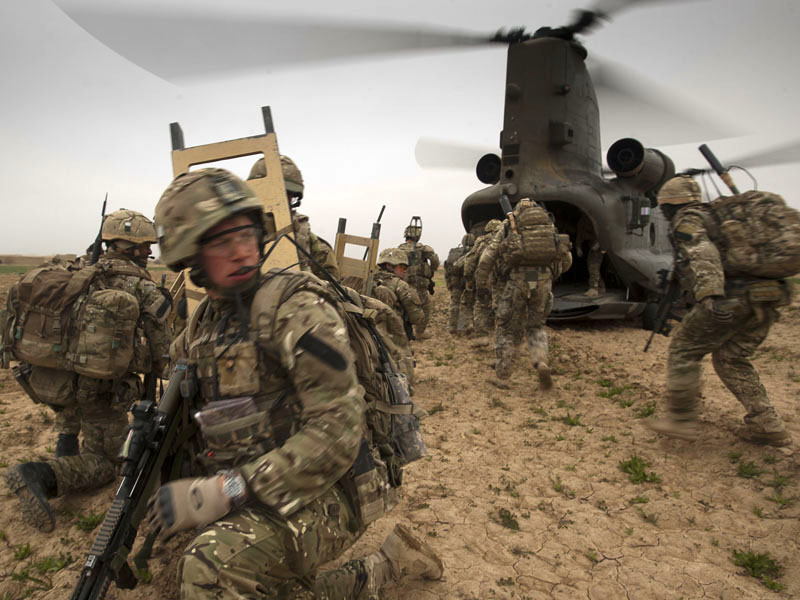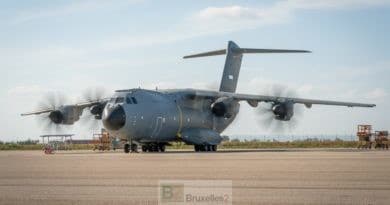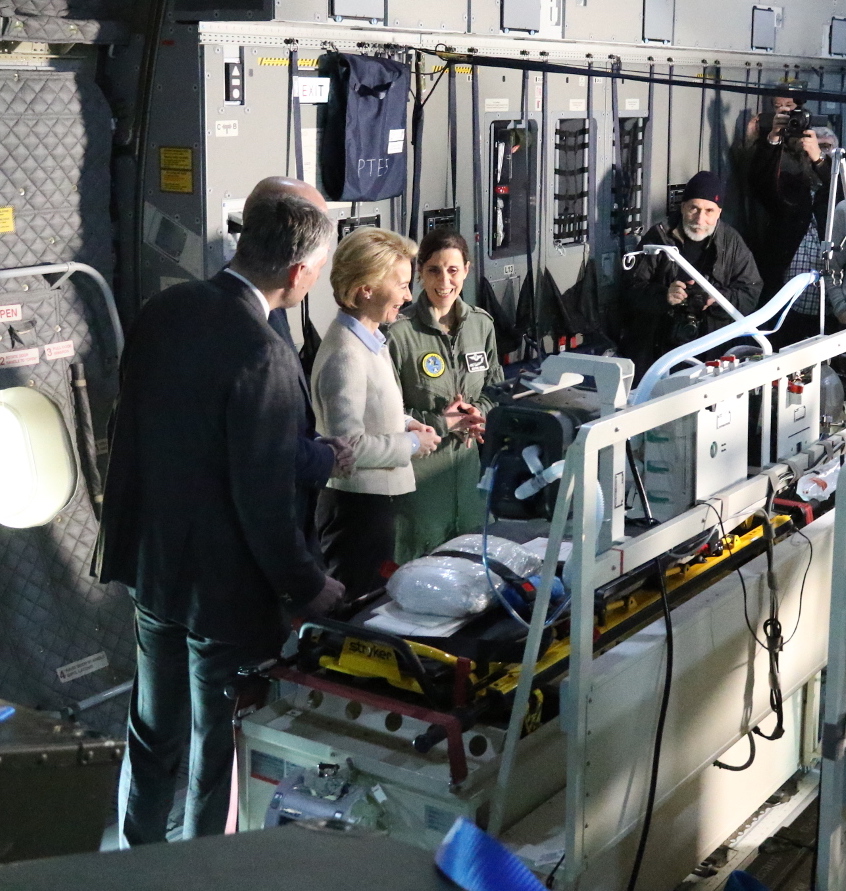Pooling and sharing, initiative germano-suédoise (novembre 2010)
Food for Thought
Berlin and Stockholm, November 2010
European Imperative
Intensifying Military Cooperation in Europe
“Ghent Initiative”
In a world of growing complexity, some nations face the challenges of balancing political ambitions and force structures on the one hand and available resources on the other. Given the steady increase in both investment and operational costs in the defence sector, combined with declining defence budgets, it will be difficult for some nations to sustain all military capabilities needed without cooperating. There are great profits to be made by finding ways of sharing expenses and burdens. This has already been proved by existing bilateral, regional and European cooperation.
Following our discussion in Ghent on strengthening Europe’s military capabilities, and building on existing examples of cooperation, Germany and Sweden intend to profit from the momentum by proposing a new initiative on increased European defence cooperation. The goal of the initiative is to preserve and enhance national operational capabilities – with improved effect, sustainability, interoperability and cost efficiency as a result. It could even make possible a broadening of military capabilities.
Our cooperation should therefore be brought forward by identifying areas of cooperation, with the purpose to spend resources within Europe more efficiently and to maintain a broad array of military capabilities to ensure national political ambitions as well as Europe’s ability to act credibly in crises.
1. Approach
To meet European ambitions and to achieve, maintain and further develop a broad capability spectrum, we must identify new fields for intensified multinational cooperation. This requires a thorough and systematic analysis of military capabilities and support structures by all EU Member States (MS) along the following categories:
Category 1: Capabilities and support structures that are deemed essential for individual nations and therefore maintained on a strictly national level limiting cooperation to find measures in order to increase interoperability. Without anticipating the results of national reviews, which may differ from country to country, capabilities such as combat, combat support and combat service support forces, intelligence, fighter airplanes and war ships could serve as an example within this category.
Category 2: Capabilities and support structures where closer cooperation is possible without creating too strong dependencies. This could be summarized under the idea of pooling. Examples within this category could be non deployable support forces and operational training forces as well as selected capabilities such as strategic (SAC) and tactical (EATF) airlift and logistics capabilities.
Category 3: Capabilities and support structures where mutual dependency and reliance upon European partners is acceptable in an international role- and task-sharing framework, for example support structures required for education, training and exercises or long-term capability development such as military academies, test and evaluation facilities and pilot training as well as capabilities related to tasks such as aerial and maritime surveillance as SUCBAS, or other niche capabilities.
2. Criteria
When identifying future areas of cooperation, the following criteria should be taken into consideration.
Operational effectiveness: Does the common activity lead to the same or higher degree of operational effectiveness – i.e. in a way that present capabilities can be sustained and/or future capabilities can be developed?
Economic efficiency: Does the common activity lead to an economically constant or even more efficient use of resources compared to a national approach?
Political implications: What are the political implications of bi- and multinational cooperation in each particular field?
3. Instruments
There are a number of different instruments possible if all criteria are met.
Improvement of interoperability provides most political and operational flexibility. It allows a flexible case by case use of national capability modules together in different operational scenarios, including EUBG, taking into account each nations individual political circumstances.
Pooling of capabilities is one way to increase efficiency and cost-effectiveness. The aim is to create synergies for all partners without creating dependencies for any single MS. Ownership of assets, command structure, processes and national caveats have to be agreed by all participating members.
Another instrument is role- and task-sharing, where national capabilities are made available to other partners. In contrast to pooling, role- and task-sharing covers a wide variety of provisions, based on national decisions of which capabilities that should be kept on a national basis or be provided by or together with others. Modalities of providing these capabilities have to be agreed by all participating MS.
4. Possible Areas for Increased Cooperation
The following fields might serve as possible areas for increased cooperation.
Harmonisation of Military Requirements: To achieve a common basis for cooperation, national capability goals and the Headline Goal 2010 should be harmonised, together with other capability development plans through commonly defined military requirements (via Common Staff Target (CST) and Common Staff Requirement (CSR)). Specific national requirements should, to the extent possible, be avoided or carefully weighed against an increase in complexity, costs and other factors.
Research & Development: R&D are crucial for improving existing capabilities and developing new ones. Non-recurrent costs are significant, regardless of future acquisition volumes. Co-ordination and cooperation in this field thus offers a high degree of improving efficiency.
Acquisition : By bundling national demand, potential savings could be realised through economies of scale. The harmonisation of military requirements and awarding of contracts on a competitive basis, are two preconditions for realising such cost-effectiveness. This requires an appropriate regulatory framework as well as close co-ordination between EU MS with regard to their respective national industrial bases in order to sustain a high degree of defence industrial competence on European level.
Training and exercises: Given decreasing numbers of forces in Europe, every opportunity to pool or share the required training facilities for common operation and funding should be utilized. This could have the dual benefit of savings and increased interoperability. Harmonisation of training and teaching contents are a prerequisite to this type of cooperation. This could also include an increased use of common exercises.
Command Structures and procedures: Establishing common command structures and procedures would offer the potential of increased interoperability and real savings, on a regional as well as European level.
Operating Costs: Given current operational commitments, the provision of expensive assets (such as strategic reconnaissance, strategic or tactical lift or exclusive national support elements) is a prime area for increased cooperation. The same is true in regards to logistics, where common solutions could create savings and offer the potential for greater synergies.
5. The Way Ahead
To put intensified military cooperation into practice, each member state should first conduct a systematic analysis of its national military capabilities and support structures according to the three categories.
The political will to commit to this rigorous national analysis should be spelled out by a ministerial guidance by Defence Ministers at the 9 December 2010 Foreign Affairs Council, with a view to structuring the process as well as the timelines.
Second, national analyses, which should be concluded in the first half of 2011, should be consolidated by relevant EU bodies . This should result in a European state of play of national capability plans and clarify possible areas for cooperation, to be presented to the Ministers for Defence.
Third, member states will then have to determine what national actions to take and identify adequate partners for cooperation in specific areas.
Fourth, the relevant EU bodies, in particular the EDA, in close cooperation with other organisations may act as facilitators to co-ordinate and possibly link the various initiatives in light of a common EU level of ambition, should the member states wish to do so.
end


